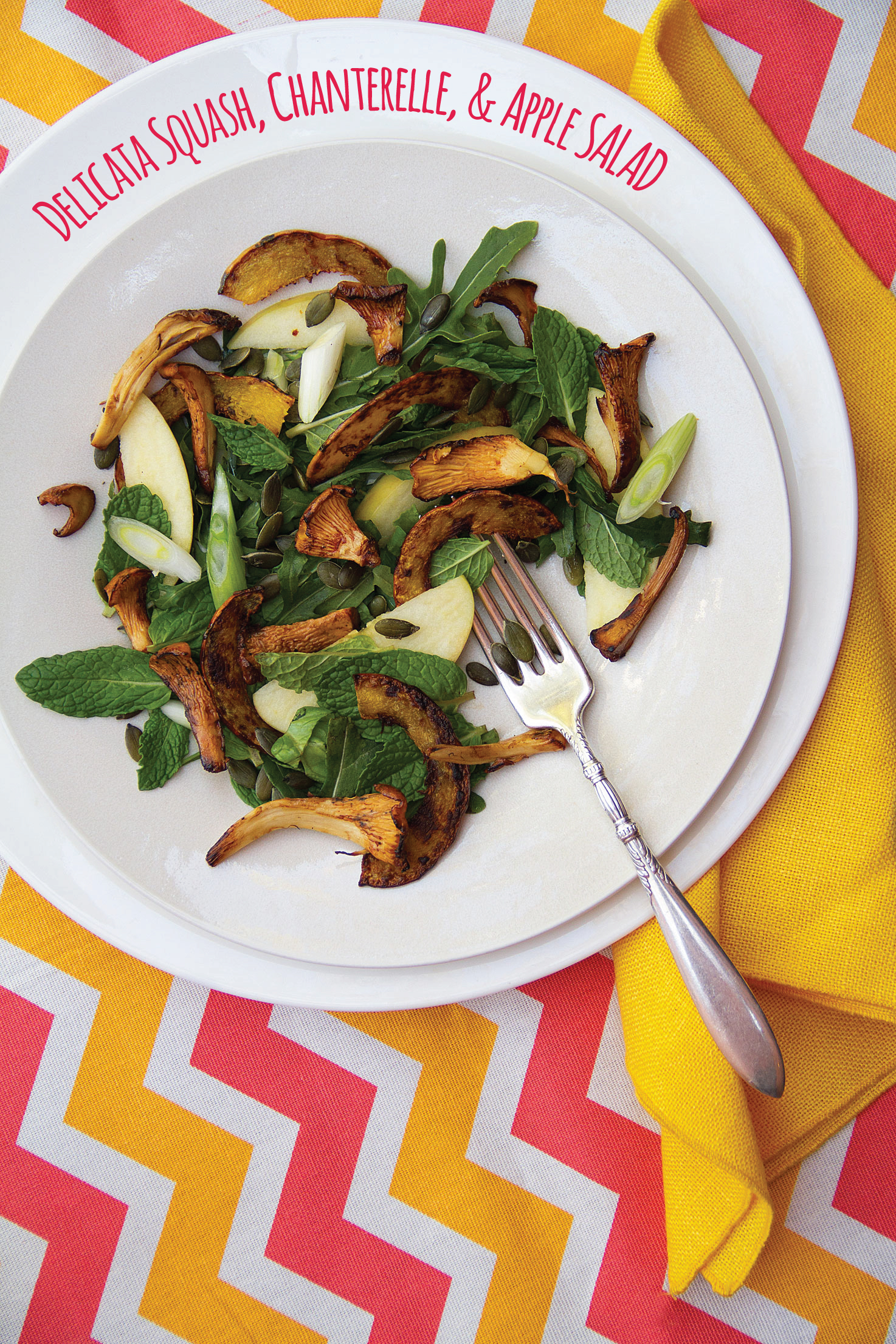
Squash Salad? You say Squash Salad and I think about the squash seeds found in an 800-year-old Native American pot that led to the reintroduction of a species eaten long ago. That’s because I can be quite the food geek. I also like to read up on anthropology. The “whys and hows” of human society and the culture that develops around it. Did you know that the anthropology of food is a real thing? If I were inclined to go back to college and study something new it would be culinary anthropology with a particular emphasis on the cultural aspects of food. I told you I was a food geek.
But this is a food blog. I know you expect pithy remarks and useable recipes, and I’ll get to those. But first I have to warn you – you may learn more today about culinary anthropology than you presume you’ ll ever need to know. That’s because I think useless information is very useful. It comes in handy at dinner parties and business lunches. You never know when a trip to the grocery store, the dog park, or even the dentist’s office will turn into an opportunity to divulge some of that useless information you’ve accumulated. I’m talking about anywhere you have an audience that thinks it might be rude to interrupt you. So take notes.
Traditionally anthropologists have studied five regions of the world they consider the “hearths” of world food. These are the areas where ancient humans first began to veer away from migrant hunting and gathering lifestyle and began cultivating their own food from the indigenous plants and animals. This seemingly useless fact is very important because you can’t make cities and societies until you develop surplus agriculture. The five regions that have survived as primary food sources are Mexico (corn), Peru (potatoes), the Middle East (wheat and barley), Africa (legumes and millet), and Southeast Asia (rice).
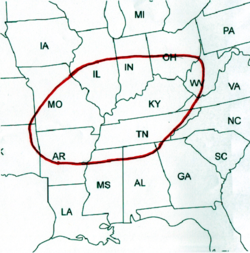 However, I’ve also been reading that the North American woodlands east of the Mississippi river may soon be officially recognized as the sixth world food hearth (sometimes referred to as Appalachia). There’s evidence to suggest that some of the modern “seeds” humans consume today may have originally been cultivated in this broad swath of North America. These indigenous crops include sunflower and sumpweed seeds (for oil), as well as grassy grains like goosefoot, maygrass, knotweed, ragweed, and amaranth as digestible starches, and possibly even a relative of what modern humans would call squash. However, unlike the North American grassy grains I mentioned (or the Peruvian potatoes and African millet), cultivated squash seems to have migrated to this sixth “hearth” and taken root (so to speak) in the diets of Native Americans. Growing food changed native peoples’ relationship to the natural environment by allowing these nomads to settle in one place.
However, I’ve also been reading that the North American woodlands east of the Mississippi river may soon be officially recognized as the sixth world food hearth (sometimes referred to as Appalachia). There’s evidence to suggest that some of the modern “seeds” humans consume today may have originally been cultivated in this broad swath of North America. These indigenous crops include sunflower and sumpweed seeds (for oil), as well as grassy grains like goosefoot, maygrass, knotweed, ragweed, and amaranth as digestible starches, and possibly even a relative of what modern humans would call squash. However, unlike the North American grassy grains I mentioned (or the Peruvian potatoes and African millet), cultivated squash seems to have migrated to this sixth “hearth” and taken root (so to speak) in the diets of Native Americans. Growing food changed native peoples’ relationship to the natural environment by allowing these nomads to settle in one place.
Once people began to settle into organized social units the Native Americans of the present-day United States and Canada slowly changed from growing indigenous plants to a maize-based (introduced from Mexico) agricultural economy. The cultivation of indigenous plants declined and was eventually abandoned, the formerly domesticated plants reverting to their wild forms. Doesn’t this sound like something going on in food news today? See what I mean? Useless information can be very interesting!
Delicata Squash Salad with Apples and Chanterelle Mushrooms
As usual, I’ve talked myself into a corner and probably bored you senseless. It also leaves me with another problem: how to get to that usable recipe I promised. I don’t have any sumpweed or goosefoot recipes at my fingertips. But I’ve got a Delicata Squash Salad with Apples and Chanterelle Mushrooms inspired by and Naomi Pomeroy I’ve been meaning to share. GREG
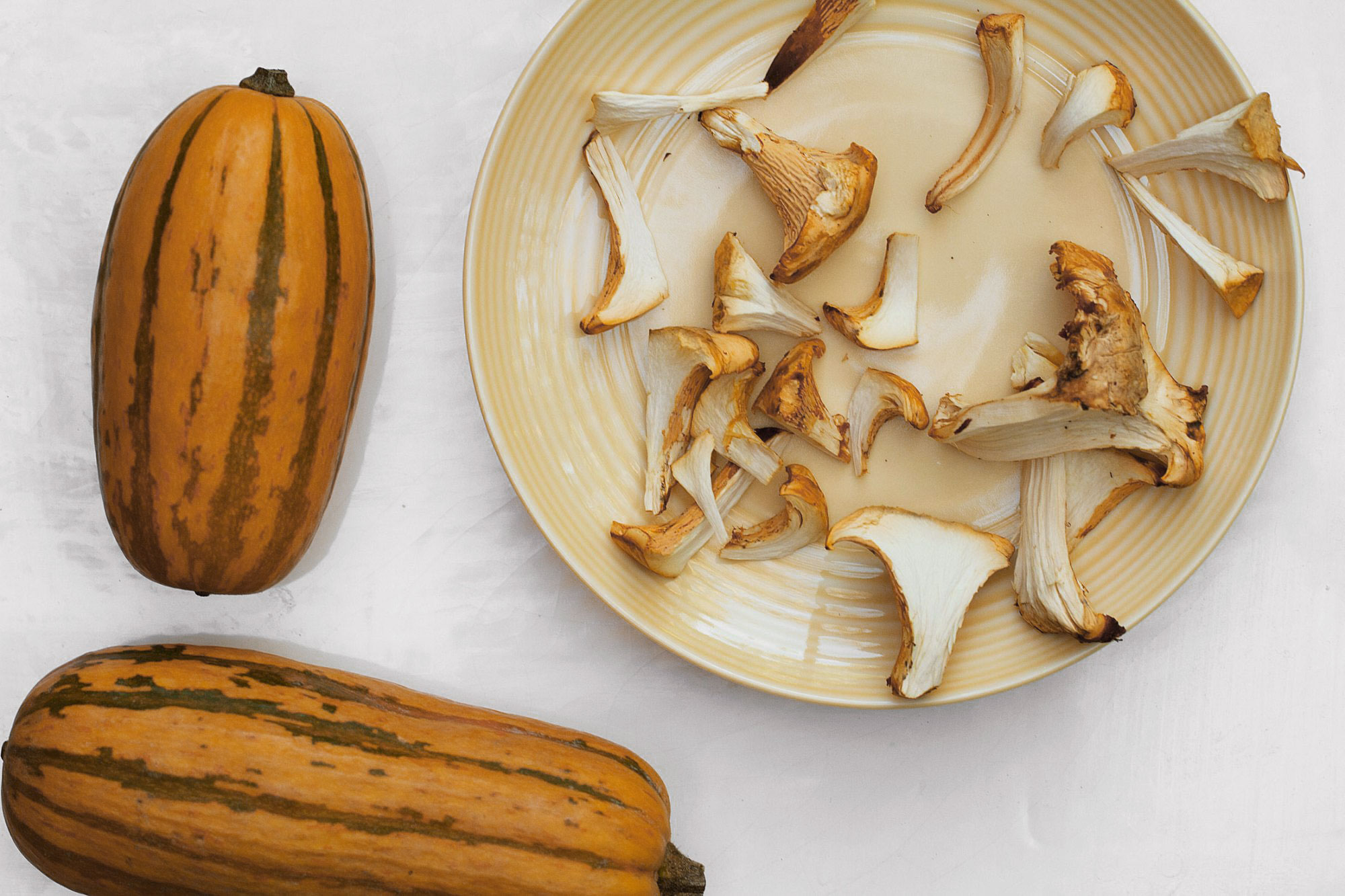
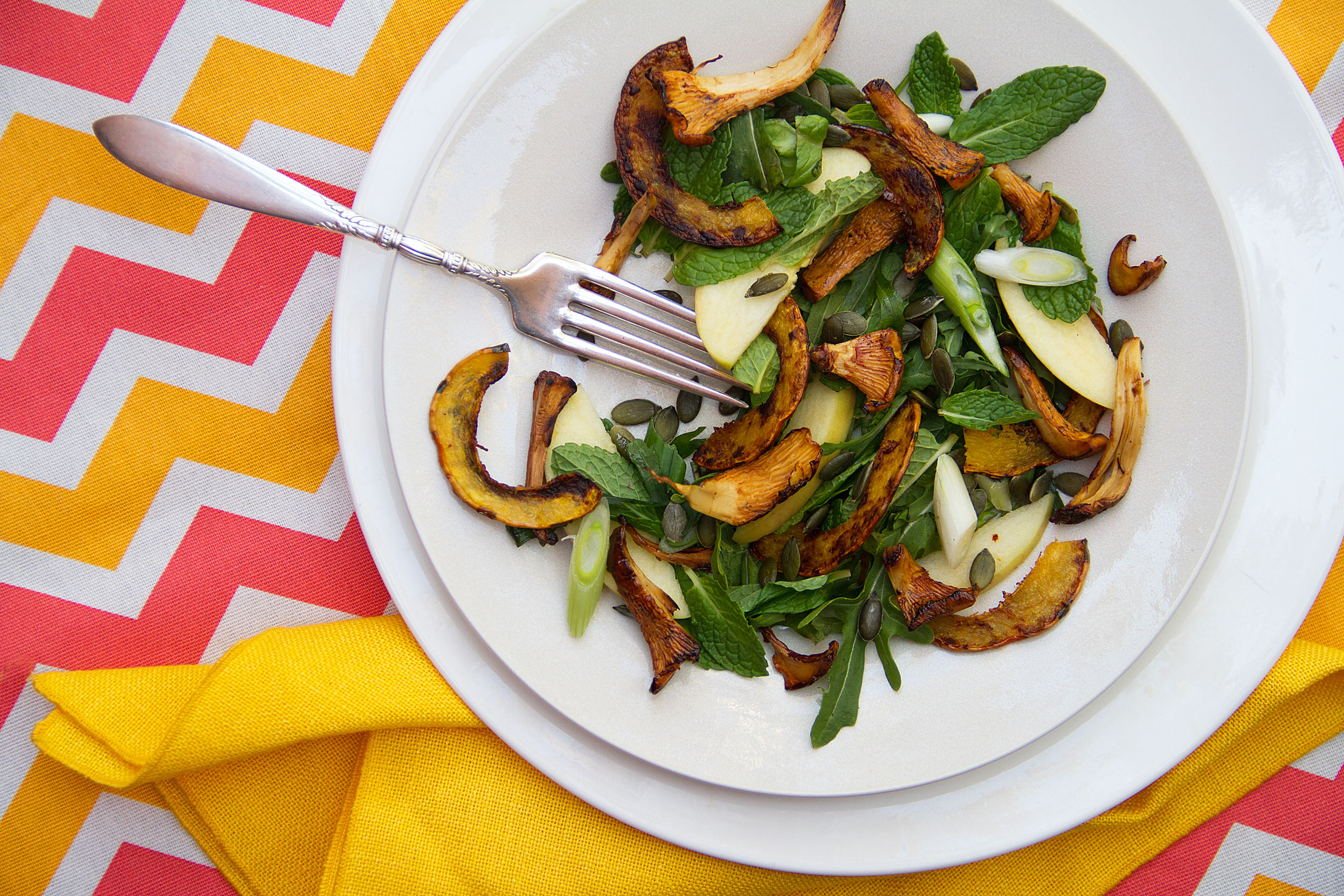
Winter Squash Salad with Apples and Chanterelle Mushrooms
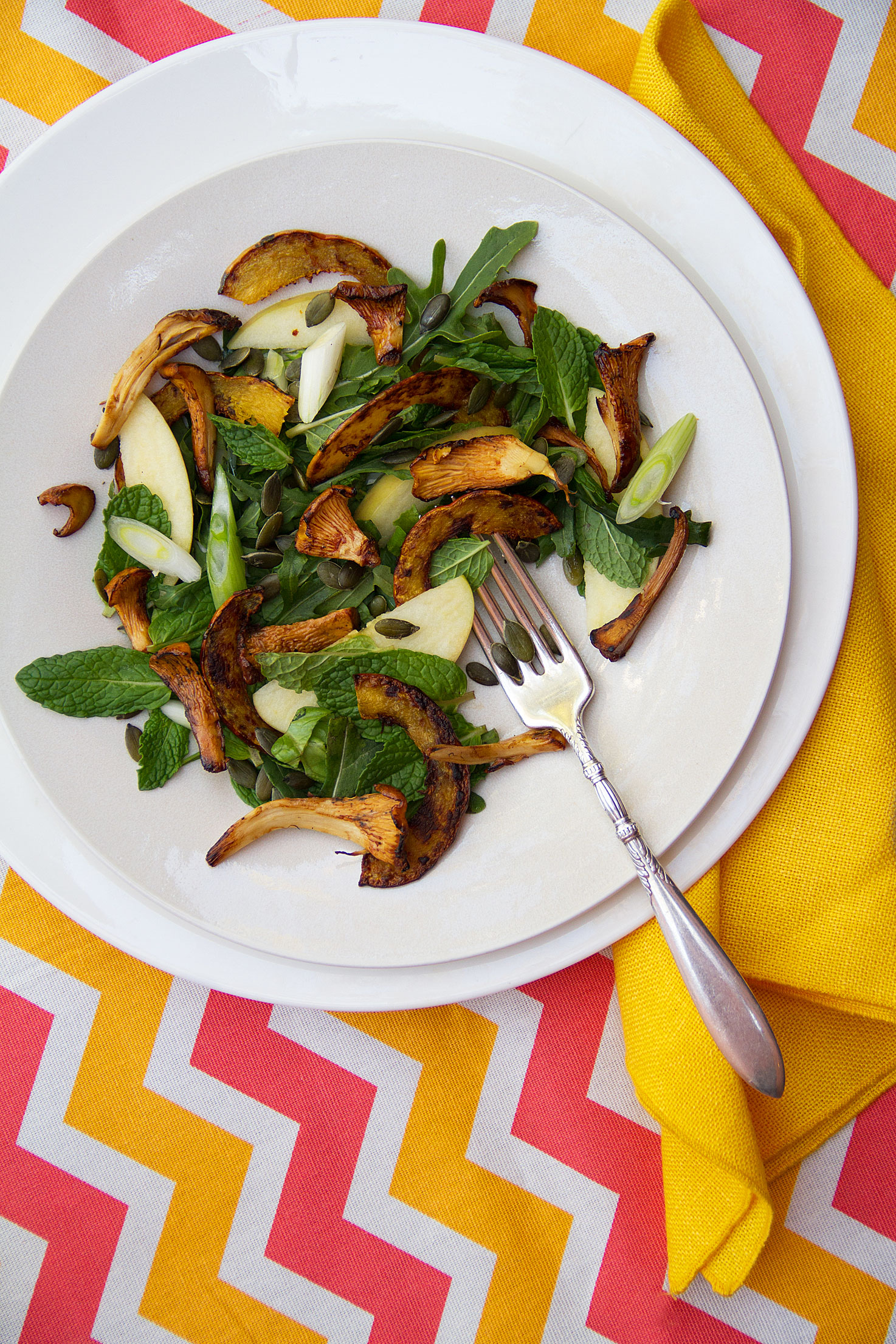
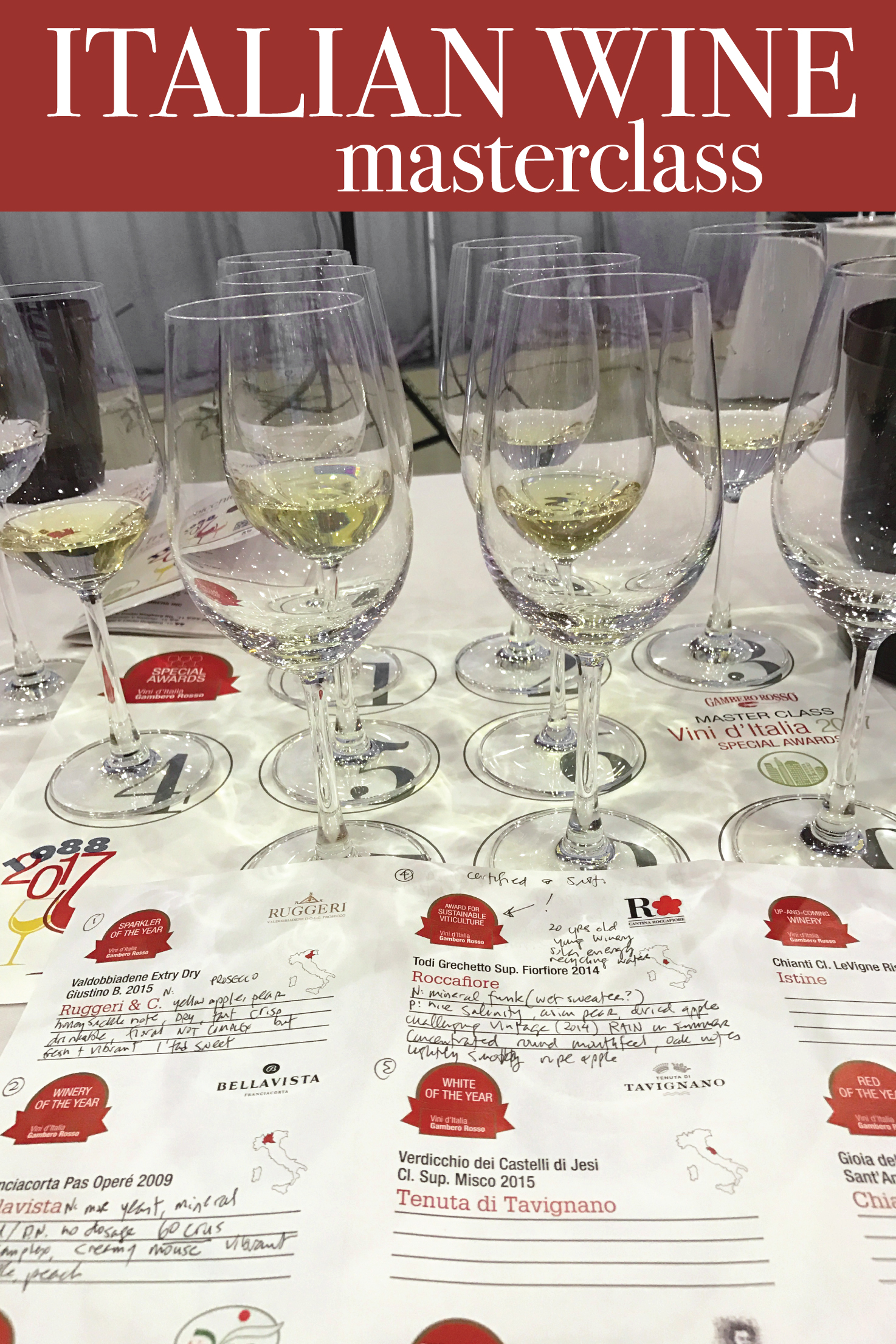

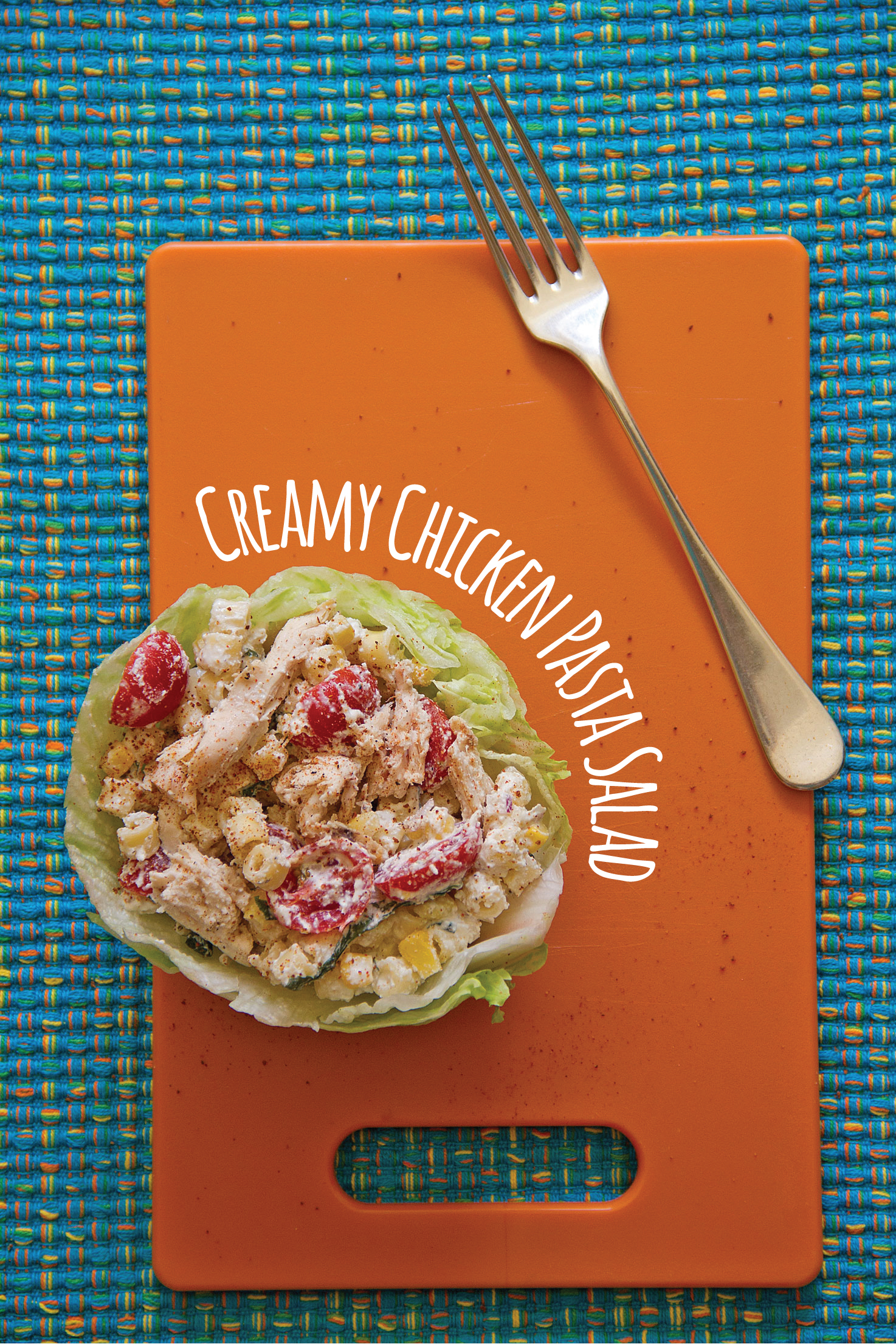
I am into edible weeds and a food geek from India. Found my way to your blog via sumpweed and goosefoot. Nina S @ Edibleweedwalk. Enjoyed reading and great to connect with other food geeks. I also spent a lot of years in the Appalachian region. Reading about it as the sixth hearth (though only 5–6 hearth theory is now questioned) was wonderful.
Sup Greg- just stumbled upon you and your interesting corner of the digital world- I like your life essay in 100 points.
This is a salad I can get behind and I love food facts… don’t be afraid to bring ’em on!
cheers… wendy
Thank you. GREG
LOVE useless facts! Pile them on — the more the better. Anyway, this is such a nice salad — dynamite combo of flavors. Really creative — thanks.
Obviously, nerds think of like, because I love that kind of information. I had no idea that they were plants indigenous to Appalachia. And boy, they sure sound like it: sumpweed? I think I might be kind of glad I don’t eat that. However, I love squash. I’ve never had a squash salad. I think that needs to change.
What a great combination, Greg — and I love that you geeked out on this topic!
Fascinating stuff here!! I’m close to the potential new food hearth, but my black thumb probably won’t help close the deal. Your salad looks terrific!
Always interesting Greg!! Thank you! Best~Bijouxs
I wish I had this recipe a couple of weeks ago when I got a bunch of chantrelles from a friend. I adore food geeks, they always enlighten me with new knowledge. Thanks!
Delicious. I think I have prepared chanterelles once in my life. I am happy to know your trick of pulling them apart into skinnier strips. Pinned!